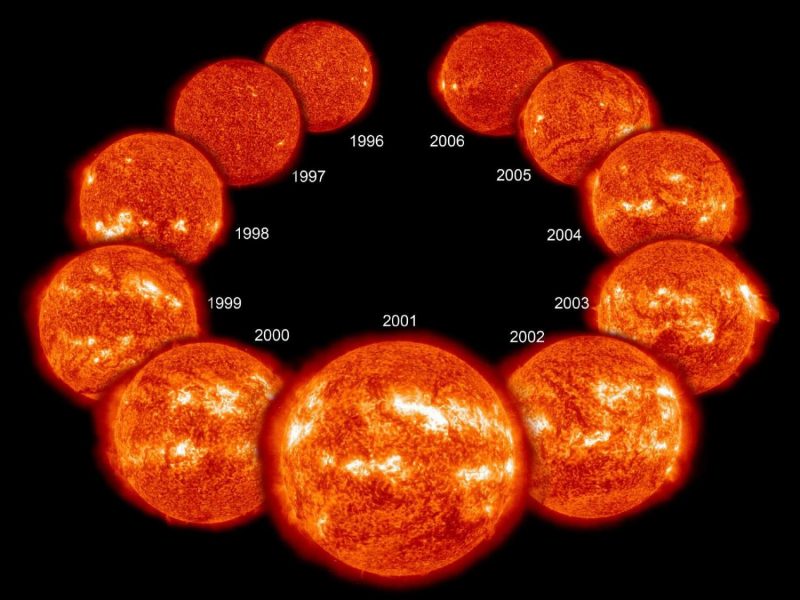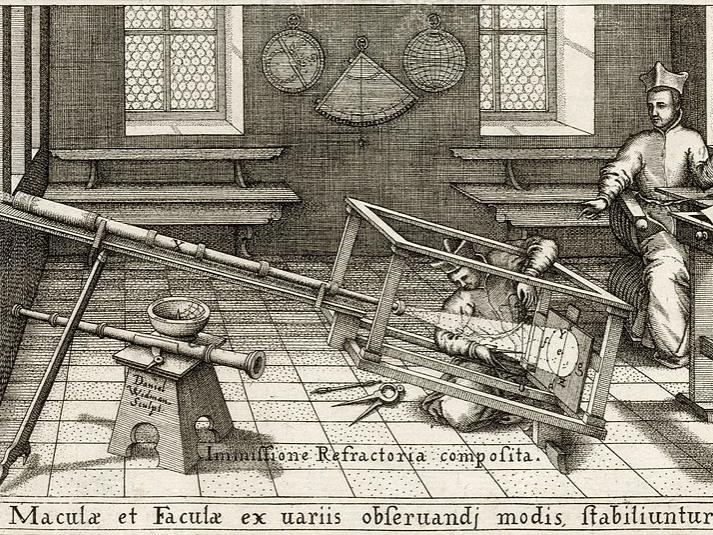
Normally, the sun follows an 11-year cycle of activity. It goes from quiet (few sunspots) to active (peppered with sunspots), then back to quiet again. But for some 70 years – from 1645 to 1715 – this cycle appeared to hit pause. Solar physicists call this period the Maunder Minimum. Examinations of old records revealed few to no observed sunspots during this time. And, mysteriously, it happened during an earthly climate event called the Little Ice Age. Any possible link between the sun’s lack of spots in the Maunder Minimum on the sun and Earth’s Little Ice Age is still being explored. On March 22, 2022, scientists announced they’ve now witnessed a nearby sunlike star that’s also apparently paused in its sunspot activity. They said they hope this star will provide insight into our sun’s Maunder Minimum, and any possible effects on Earth.
The scientists published the results of their study – a look at a star apparently undergoing a period of few to no sunspots – in the peer-reviewed Astronomical Journal on March 22, 2022.
What is a sunspot or starspot?
A sunspot is a dark, cool area on the surface of the sun. On other stars, they can go by the name starspot. Galileo began observing sunspots back in 1610. Astronomers have been recording sunspot activity on our sun since ever since. Yet, from the mid-1600s to early 1700s, sunspots mostly disappeared. Edward and Annie Maunder studied the historical record of this phenomenon in the 1800s, and the quiet time period on the sun – the Maunder Minimum – now bears their name.
Anna Baum of Penn State and lead author of the paper that looked at 59 sun-like stars said:
We don’t really know what caused the Maunder Minimum, and we have been looking to other sun-like stars to see if they can offer some insight. We have identified a star that we believe has entered a state similar to the Maunder Minimum. It will be really exciting to continue to observe this star during, and hopefully as it comes out of, this minimum, which could be extremely informative about the sun’s activity 300 years ago.

A star whose starspot cycle has stopped
The researchers used 30 years of data from Mount Wilson Observatory and 24 years of data from Keck Observatory to analyze these sun-like stars. Jason Wright of Penn State explained the process of studying these sun-like stars:
This continuous, more than 50-year time series allows us to see things that we never would have noticed from the 10-year snapshots that we were doing before. Excitingly, Anna has found a promising star that was cycling for decades but appears to have stopped.
The team found 29 of the 59 stars showing at least two full periods of starspot cycles. Many of these lasted more than a decade. The other 30 didn’t appear to have any starspot cycles. These stars may be rotating too slowly to have the physical process needed to produce starspots. They may also be magnetically “dead” or near the end of their lives. But one star showed a starspot cycle that then ceased.
The promising star – with the catalog name HD 166620 – has a cycle of about 17 years. Then, in 2003, its starspots virtually disappeared, and it has continued this period of low activity. Jacob Luhn, formerly of Penn State and now at the University of California, Irvine, said:
When we first saw this data, we thought it must have been a mistake, that we pulled together data from two different stars or there was a typo in the catalog or the star was misidentified. But we double- and triple-checked everything. The times of observation were consistent with the coordinates we expected the star to have. And there aren’t that many bright stars in the sky that Mount Wilson observed. No matter how many times we checked, we always come to the conclusion that this star has simply stopped cycling.
A Maunder Minimum on other stars?
Scientists hope to keep an eye on HD 166620 and watch as it potentially comes out of its starspot minimum. These observations may explain how stars like the sun generate their magnetic dynamos. Baum said:
There’s a big debate about what the Maunder Minimum was. Did the sun’s magnetic field basically turn off? Did it lose its dynamo? Or was it still cycling but at a very low level that didn’t produce many sunspots? We can’t go back in time to take measurements of what it was like, but if we can characterize the magnetic structure and magnetic field strength of this star, we might start to get some answers.

Maunder Minimum vs. communications and climate
We know that strong solar activity can disrupt satellites and global communications. Sunspot cycles may also have an impact on global climate. Learning from this star may help us understand these impacts, as well as affect our search for planets beyond our solar system. Howard Isaacson of the University of California, Berkeley, said:
Starspots and other forms of surface magnetic activity of stars interfere with our ability to detect the planets around them. Improving our understanding of a star’s magnetic activity might help us improve our detection efforts.
Wright explained how data from many sources came together to provide this insight:
This research is a great example of cross-generational astronomy, and how we continue to improve our understanding of the universe by building upon the many observations and dedicated research of astronomers that came before us. I looked at starspot data from Mount Wilson and Keck Observatory for my thesis when I was a graduate student, Howard looked at starspot data from the California Planet Survey for his master’s thesis, and now Anna has stitched together all the data for a more comprehensive look across the years. We are all excited to continue studying this and other promising stars.
Bottom line: We may learn more about the sun’s Maunder Minimum – quiet period of low sunspots – thanks to the help of a nearby sun-like star.
The post Mysterious Maunder Minimum: Nearby star offers clues first appeared on EarthSky.
0 Commentaires